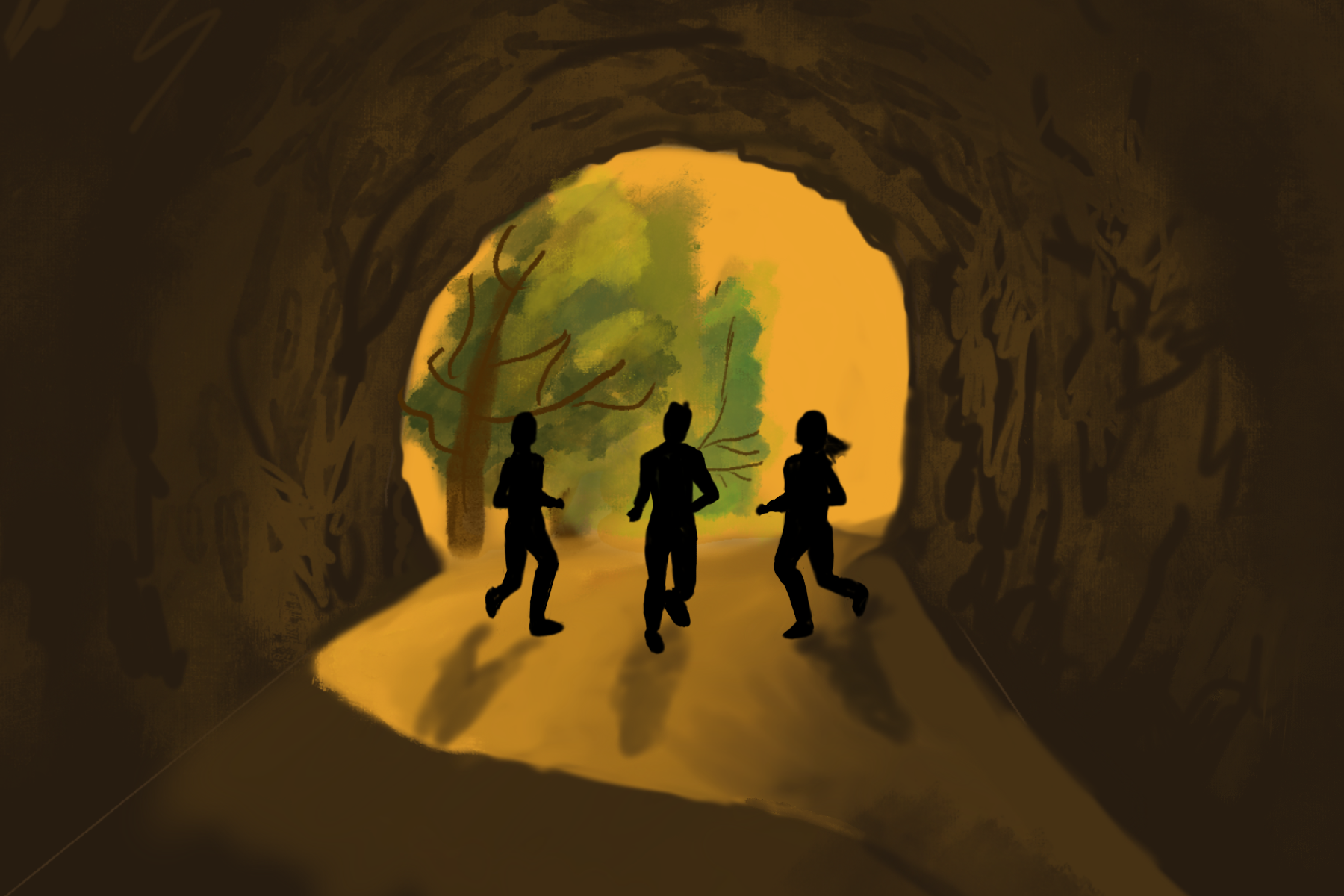
By Emma Drzala (V)
March 13, 2020: a day that will never be forgotten, not only at Pingry but across the nation. On that day, Pingry students were celebrating the news that school would shut down for a couple of weeks following spring break, as a result of the COVID-19 pandemic. Everyone was naïve to the situation around them; nobody could truly predict what was to come. We all thought we would be back in school by April or May, and that the shutdown was just a two-week extension to our break. We all gleefully walked out of school, not knowing that we would not return for half a year.
Two weeks turned into a month. A month became three months. School got out. Summer passed. Still, no end to the pandemic in sight. We came back to school with masks and shields. Still, no sign of the pandemic being over.
Just as we were prepared to give up all hope and accept the fact that the pandemic was our new normal, and that we would forever be confined behind our masks, shields and plexiglass prisons, Pfizer Pharmaceuticals announced a groundbreaking development on November 9th: they had finished developing a vaccine with a 95% effectiveness rate.
After the initial excitement surrounding this positive news died down, my mind bustled with questions. I wondered when the vaccine would be available to the general public, how many people would actually trust its reliability, but most importantly: would life finally, after so many agonizing months of quarantine, return back to normal? Would I finally be able to walk into school without scrambling to finish my pre-screening form? Could I finally eat lunch with my friends without being reprimanded for sitting less than six feet apart?
Although on first thought, the vaccine seemed to be the ultimate end-all for this virus, I realized that this was simply wishful thinking after months in quarantine and away from my friends.
We have to acknowledge that a vaccine may not live up to the hefty expectations the American public has placed on it. There is a high probability that mask-wearing and social distancing measures will still be enforced. During this pandemic, I have longed for a return to school in-person, and the empty and frankly depressing experience of online learning has only cemented this desire even more. The media and our politicians love espousing how the COVID vaccine will prove to be a silver bullet to the entire pandemic and ultimately, this mess of a year. But, let’s be pragmatic here. I do remain optimistic that this vaccine will bring back a degree of normalcy to our lives. Having a portion of the population, especially our most vulnerable citizens (seniors, frontline workers, doctors, etc.), will significantly mitigate the most serious risks of the disease. But with such limited distribution currently, this vaccine is no magic wand. If we take a look at the maladies of history that humanity has successfully defeated, such as polio, measles, and smallpox, nearly 80% of the population had to be vaccinated or develop immunity in order for these diseases to be vanquished. If we are to reach the said 80% of herd immunity, issues with storage and production, along with a sizable population of Americans unwilling to take the vaccine due to its experimental nature, will persist for weeks and months after the vaccine first comes out. These issues certainly hamstring our efforts, leaving a significant portion of the population vulnerable for quite some time.
So as pharmaceutical companies and the FDA begin the long-awaited distribution of vaccines, we must not fall into the trap of believing that we are entirely done with this horrible virus. Yes, there is a light at the end of the tunnel, and it is a miracle of science that American pharmaceutical firms have been able to develop the vaccine in such a short period of time. It is tantalizing to let down our guard at this juncture. But we cannot. We must be aware that until virtually every person in the United States has received the vaccine, COVID and the resulting regulations we have come to loathe this year will still linger. So let’s stick to these rules for just a couple more months and not let our guard waver. We have been forced to endure these rules for a year already, so several weeks will not hurt. We will be back together soon with our friends, under the sun, with no masks on and not socially distanced.
We are almost there. We just need to keep it together for this final sprint. Wear your masks. Spread out. Stay safe. There is finally a light at the end of the tunnel.
Art by Monica Chan (VI)
